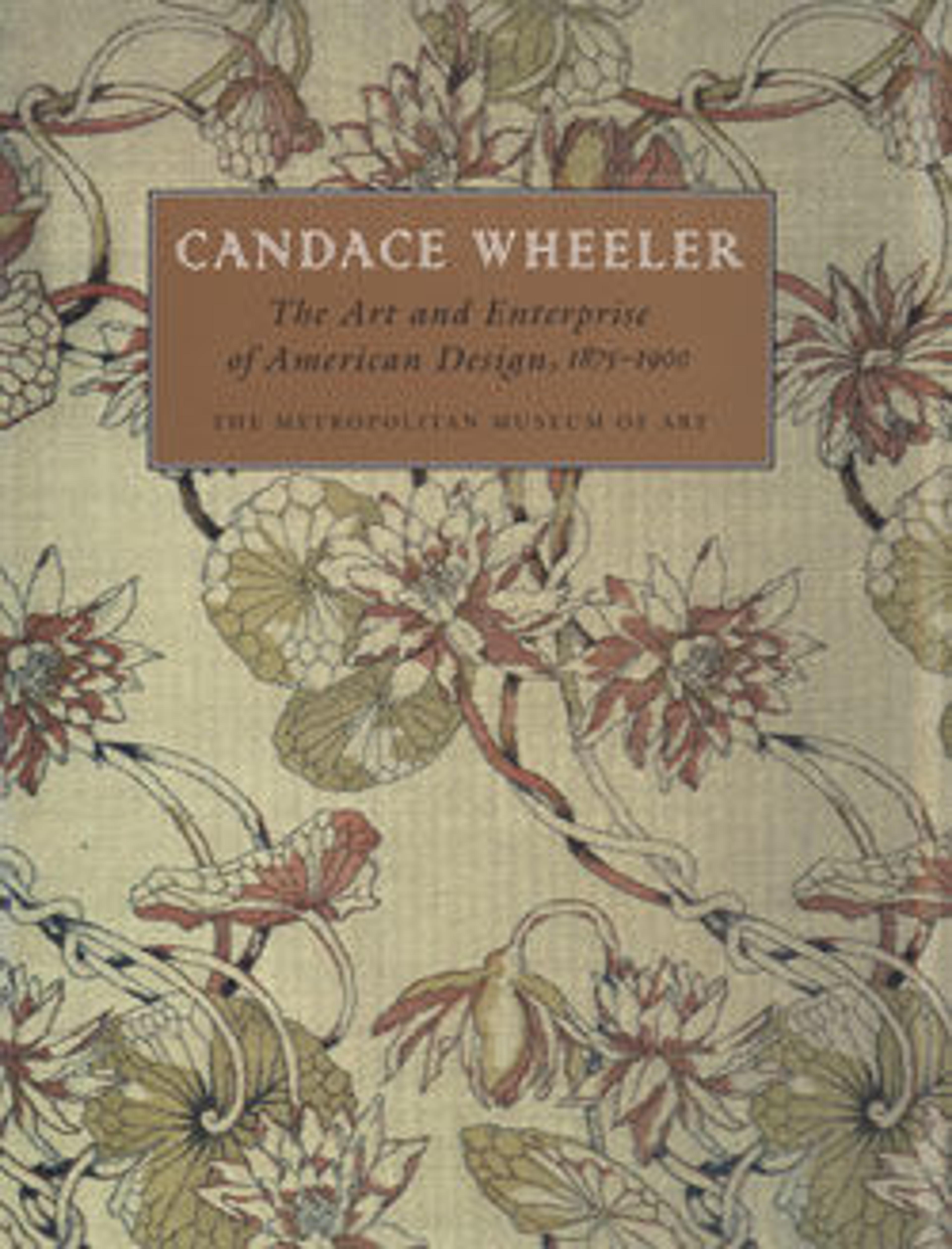Pomegranate textile
The pomegranate has a long history in Western art as a symbol of fertility because many seeds are contained in each fruit. It is especially common in fifteenth-century figured velvets of the Italian Renaissance, which feature patterns of pomegranates enclosed by sinuous stems and tendrils. These probably inspired Candace Wheeler (1827-1923) in the 1890s when she was searching for historical precedents. In the Library in the Woman’s Building at the 1893 Chicago World's Columbian Exposition, Wheeler employed a slightly modified version of this pattern—a heavy blue brocade rather than the damask seen here. The brocade was made into wide portieres and was also used to fill the fireplace opening of the room’s ornately carved mantelpiece.
Artwork Details
- Title: Pomegranate textile
- Designer: Associated Artists (1883–1907)
- Manufacturer: Manufactured by Cheney Brothers (American, 1838–1955)
- Date: ca. 1883
- Geography: Made in South Manchester, Connecticut, United States
- Culture: American
- Medium: Silk, woven
- Dimensions: 15 x 21 in. (38.1 x 53.3 cm)
- Credit Line: Gift of Mrs. Boudinot Keith, 1928
- Object Number: 28.70.8
- Curatorial Department: The American Wing
More Artwork
Research Resources
The Met provides unparalleled resources for research and welcomes an international community of students and scholars. The Met's Open Access API is where creators and researchers can connect to the The Met collection. Open Access data and public domain images are available for unrestricted commercial and noncommercial use without permission or fee.
To request images under copyright and other restrictions, please use this Image Request form.
Feedback
We continue to research and examine historical and cultural context for objects in The Met collection. If you have comments or questions about this object record, please contact us using the form below. The Museum looks forward to receiving your comments.
